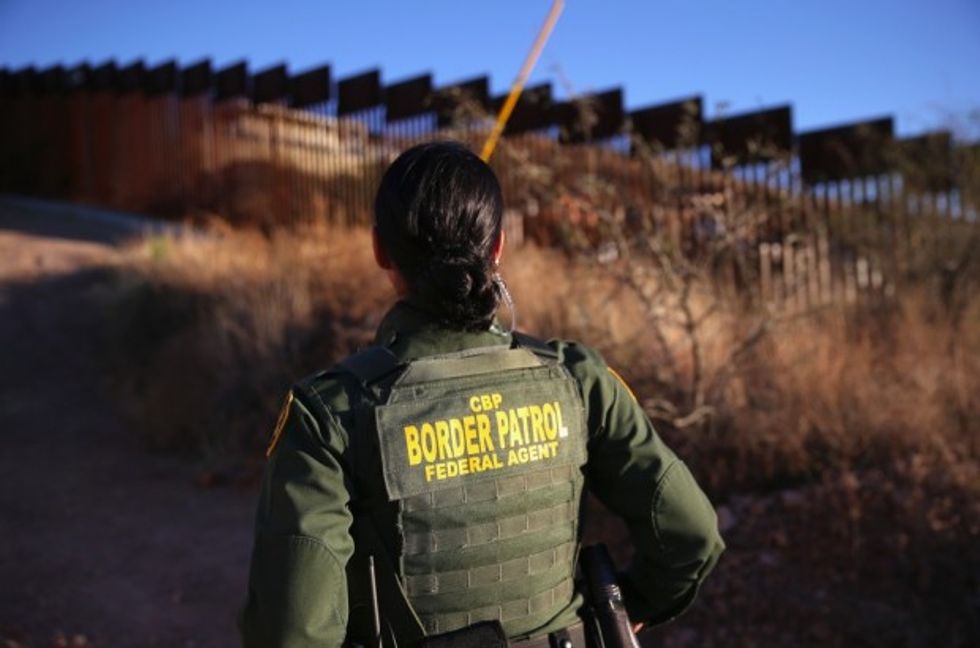
Image source: John Moore/Getty Images

With many of the GOP presidential candidates detailing their plans for immigration reform, a timely study looked into the effects of increased border security between the U.S. and Mexico.

The research by Todd Pugatch with Oregon State University and Sarah Bohn with the Public Policy Institute of California doesn't tackle the question of whether increased border enforcement has positive or negative results, but looked at the data of how this enforcement impacts migration patterns from Mexico and within the U.S.
What they found was that for every 1,000 additional border patrol agents preventing illegal immigration to a state, that state's share of Mexican immigrants went down by about 22 percentage points between 1994 and 2011. According to the researchers, the share measures the percentage of Mexican immigrants living in a state out of all Mexican immigrants residing in the U.S.
Pugatch said that states were Mexican immigrants have usually settled saw a decline in their share due to stricter enforcement, and, as a result, "Mexicans recently have been settling in parts of the U.S. where historically they have not lived in large numbers."
"We’re not looking at whether the total number of immigrants goes up or down," he said in a statement. "What our paper is showing is how, at a given time, immigrants are dispersed. It’s like squeezing a balloon. The total amount of air is the same, but the shape is changed."
This, the researchers wrote in the study published in the journal Demography, is the "first evidence on the causal effect of border enforcement on the full spatial distribution of Mexican immigrants to the United States."
Pugatch told TheBlaze previous research on the effect of border enforcement focused on its deterrent effect.
"What we are looking at is a different but related question, which is to what extent does border enforcement alter where within the country migrants choose to locate," he said.
"We know that migrant groups tend to congregate in particular areas for various reasons — some economic and some social — and with border enforcement altering where migrants choose to cross border and where they choose to reside ... border enforcement might have the unintended consequence of accelerating the formation of migrant communities in different places where whey hadn't been residing in large numbers previously," Pugatch said.
The researchers speculated that if border enforcement had not changed between 1994 and 2011, the share of Mexican immigrants in California and Texas would each be 8 percentage points higher and other states would have lower or unchanged shares.
Though California and Texas saw lower shares of Mexican immigrants during this timeframe, the study authors noted that states like Illinois, New York, Florida and Georgia saw their shares increase.
Understanding how border enforcement impacts immigration decisions, the researchers said, could be useful for policymakers. Border enforcement could also influence where individuals entering the country legally choose to live as well, Pugatch said.
"Policymakers at every level have concerns about how immigrants change social and economic conditions in a community," Pugatch said in a statement. "If we can better understand why people end up the places they do, we can better prepare."
He told TheBlaze this research provides a new piece of evidence on the broader effects of border enforcement on the composition of local communities in the U.S.
"It's not for us to say whether that's a good bad thing, we're just tyring to provide and analyze effects," he said. "It's for policy makers to decide what to do with that information, and policy makers have a keen interest in understanding the composition of their communities. ... We hope that this provides additional evidence on how communities are formed."
—
This story has been updated for clarity and to add more information.